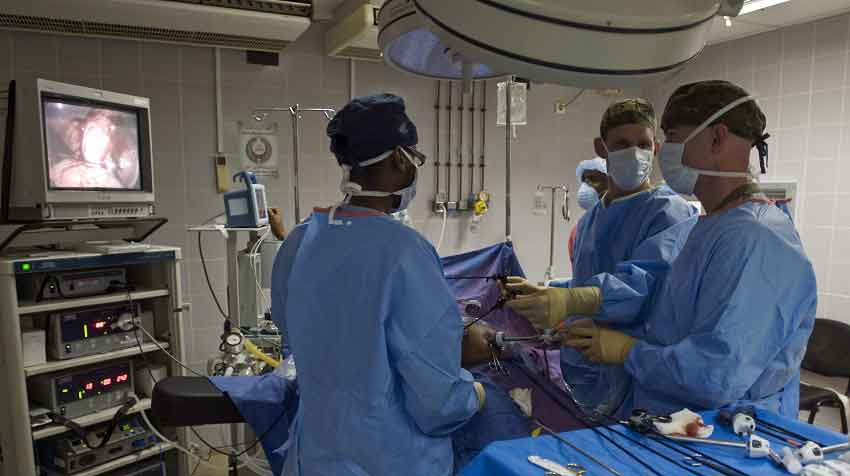An algorithm can improve outcomes in ovarian cancer patients
An algorithm can improve outcomes in ovarian cancer patients
2 Mar 2015A surgical algorithm developed at MD Anderson Cancer Center in Houston has dramatically increased complete resection rates in advanced ovarian cancer, giving patients the best possible chance of survival in this otherwise unforgiving disease, researchers said.
Since surgeons at the center introduced the "Anderson Algorithm," in mid-2013, complete resection rates have climbed to 84% from 20% pre-inception for patients who are eligible for surgery first. This is according to Anil Sood, MD, a professor of gynecologic oncology and reproductive medicine at the cancer center, and colleagues. In addition, there was a trend towards increased complete resection (complete removal of all visible tumor) in patients who underwent neoadjuvant chemotherapy.
The algorithm was developed through the Moon Shot Program, launched in 2012 to reduce cancer-related mortality.
What is the relationship between ovarian cancer and residual disease?
A large body of literature has found that the most robust prognostic variable between clinical and pathological response rates and progression-free and overall survival in patients with advanced-stage ovarian cancer is the degree of postoperative residual disease.
"Survival of patients with advanced-stage ovarian cancer is inversely proportional to the volume of residual disease," Sood's group wrote. "[And] those with no gross residual disease have the best outcome compared with patients with any visible residual disease."

Program details and main goals
The Anderson Algorithm works as below:
- Those who are felt to be an appropriate candidate for surgery are offered diagnostic laparoscopy for assessment of peritoneal disease.
- Two surgeons independently score the abdomen to determine resectability of the disease. The opinion of a third adjudicating faculty member is sought in cases where the two surgeons reach different determinations. So far, the first two surgeons have agreed 98% of the time.
- A validated composite scoring system is used to determine the ability to resect the tumor so no gross residual disease remains.
- Patients with a predictive value index (PVI) <8 are offered primary cytoreductive surgery, while those with a PVI ≥8 are offered neoadjuvant chemotherapy first and subsequent interval tumor reductive surgery as indicated. The PVI is based on the extent of disease identified by laparoscopy on seven other organs.
- Frozen tumor samples are also obtained from several pre-specified sites including the ovary or suspected primary and the omentum as well as from two additional metastatic sites. Tumor samples are obtained at the time of primary tumor assessment either during diagnostic laparoscopy, primary cytoreductive surgery, or both.
- For patients who are assigned to neoadjuvant chemotherapy first, interval cytoreduction is undertaken in all patients who have at least a partial response to three cycles of induction chemotherapy.
- Additional fresh tissue is also taken from matching sites in patients with gross disease to analyze pre-chemotherapy tissue samples for any adaptive changes that may have occurred in response to chemotherapy.
The main goal of the program is to improve the proportion of patients with advanced-stage ovarian cancer who undergo complete cytoreduction. A complete gross resection (RO) is defined by the absence of any macroscopic residual tumor.
The study allows a more personalized surgical approach
At the time of publication, investigators had observed no port site metastases and no differences in surgical morbidity between patients who underwent primary cytoreductive surgery first and those who underwent interval surgery after neoadjuvant chemotherapy.
"Our algorithm allows us to be much smarter about whom we operate on up front, providing a more individualized approach to surgery that’s led to better results for our patients," the authors stated, adding that "we anticipate the improvement in RO resection will translate into improved patient progression-free and overall survival."
Investigators are currently working with academic cancer centers as well as private providers to expand the use of the algorithm.
Source: MedPage Today